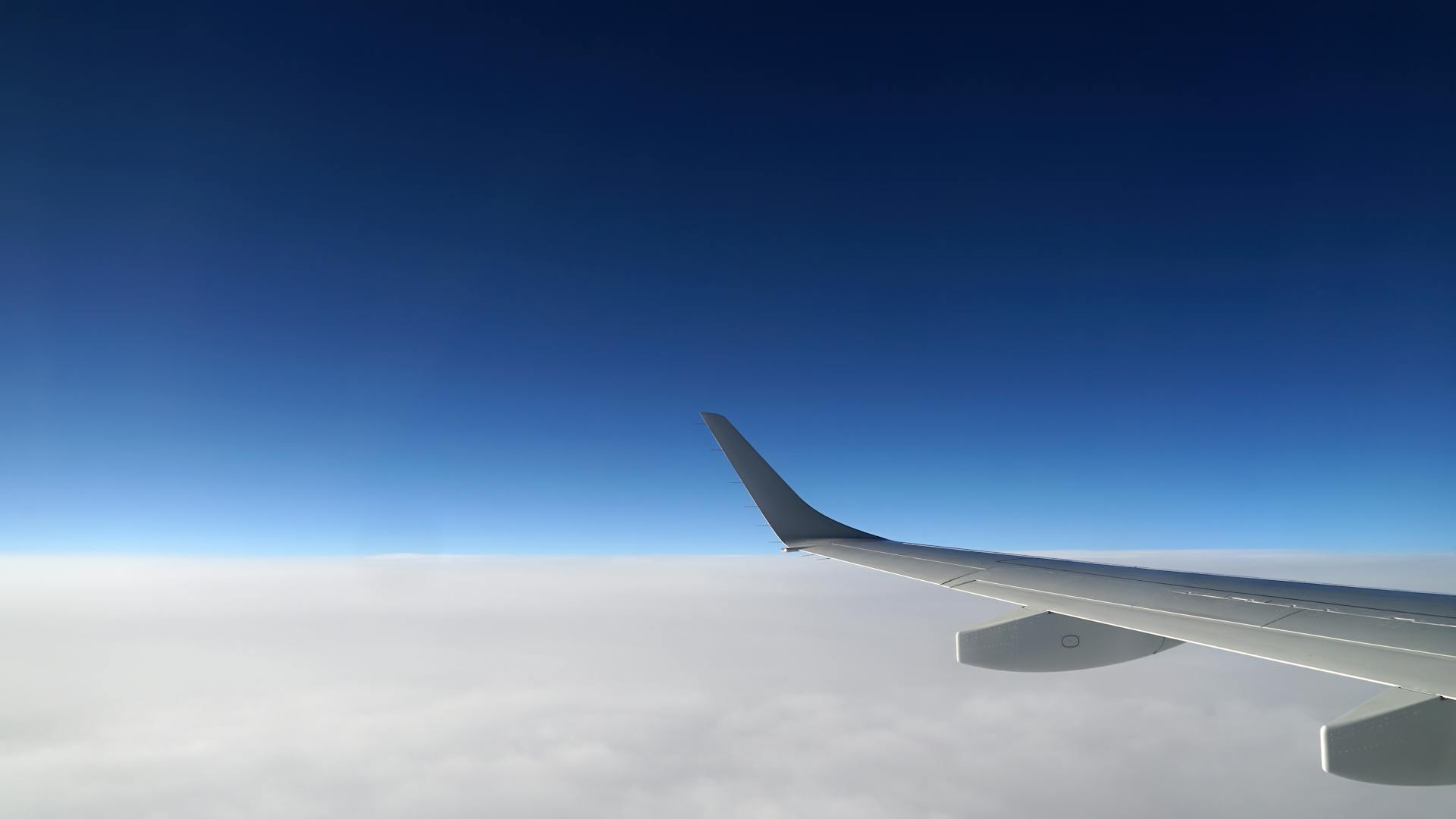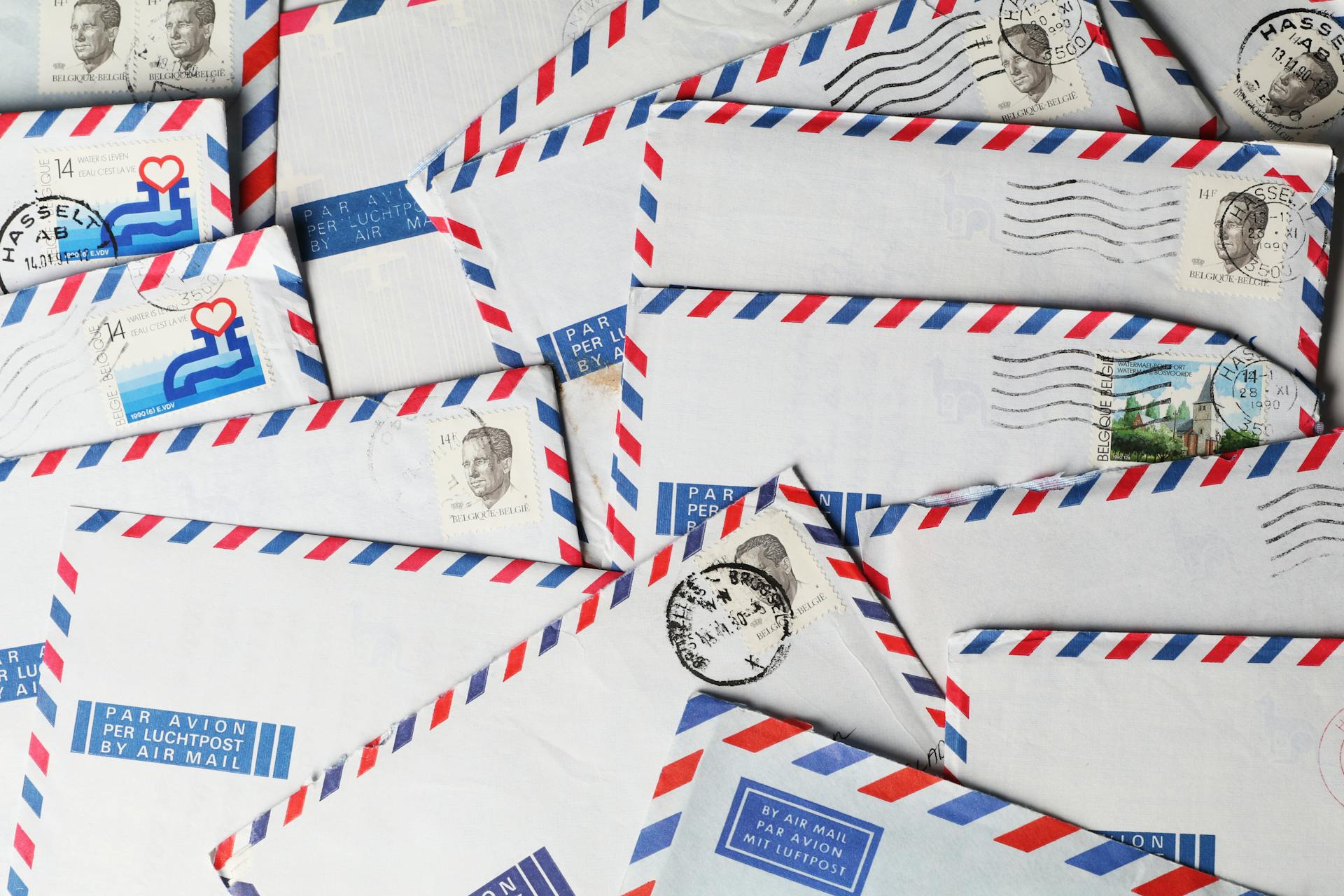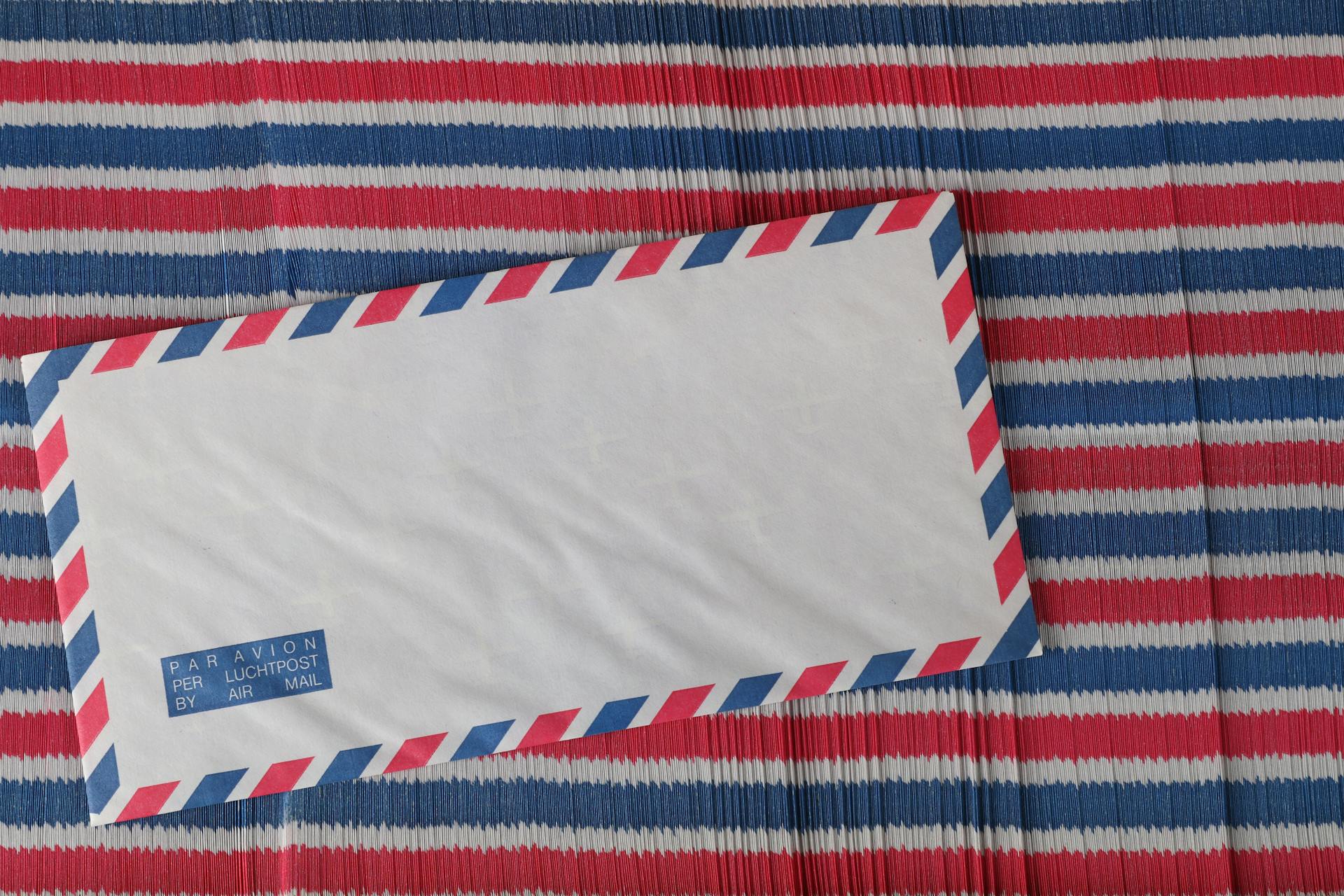
The United States Airmail Service has a rich history that spans over a century. It was first introduced in 1918 as a way to quickly transport mail across the country.
The first airmail flight took place on May 15, 1918, between Washington, D.C. and Philadelphia. It was a short flight, but it marked the beginning of a new era in mail transportation.
The first airmail service was operated by the United States Army Signal Corps, which used airmail planes to transport mail between cities. The planes were often modified to carry mailbags, and the pilots had to navigate through treacherous weather conditions.
The introduction of the airmail service was a game-changer for the postal industry, reducing delivery times and increasing efficiency.
Curious to learn more? Check out: First Air Mail Marker
Early Developments
The first aerial flight in North America by balloon took place on January 9, 1793, from Philadelphia to Deptford Township, New Jersey. Jean-Pierre Blanchard carried a personal letter from George Washington on this historic flight.
In 1859, John Wise piloted an unofficial balloon post flight from St. Louis, Missouri, to Henderson, New York, covering a distance of 1,290 km. He carried a mailbag entrusted to him by the American Express Company.
The first delivery of air mail in the United States was achieved by Blanchard on January 9, 1793. One month later, Wise flew from Lafayette, Indiana, to Crawfordsville, Indiana, carrying 123 letters and 23 circulars.
Wise's historic postal covers were collected by the postmaster Thomas Wood and endorsed "PREPAID." Only one of these covers was discovered in 1957.
For your interest: Apollo 15 Postal Covers Incident
Scheduled Service
The first scheduled transcontinental air mail service was launched on September 8, 1920, flying between New York and San Francisco.
This service was a significant milestone, reducing the time of the trip from over 70 hours to a schedule of 34 hours 46 minutes Westbound, and 32 hours 3 minutes Eastbound.
The route included 13 intermediate stops where mails were exchanged and aircrew relieved, and was accomplished at airfields located at various cities across the country.
Navigational beacons were constructed across the country to help guide pilots delivering air mail, placed about 25 miles apart from each other, and included large concrete arrows with accompanying lights to illuminate them.
The first daily Transcontinental Air Mail service involving both day and night flying over the entire route was opened on July 1, 1924.
By 1926, the nation's airmail service had grown significantly, but it was still a tiny operation, with Benjamin Lipsner, superintendent of the airmail service, using a single dispatch board to keep track of airplanes and pilots.
Discover more: 1918 Curtiss Jenny Airmail Stamps
Air Mail Operations
The initial transcontinental air mail service began on September 8, 1920, flying between New York and San Francisco. The route was laid out by Eddie Rickenbacker and Bert Acosta in July and August of that year.
The first experimental through flight carrying about 100 letters landed at Durant Field in East Oakland. This marked the beginning of a significant milestone in US airmail service.
The transcontinental mail service was initially flown only during daylight hours, with nighttime flights not introduced until February 22, 1921. A nighttime leg from Omaha to Chicago was flown for the first time with Jack Knight as the pilot.
The first daily transcontinental air mail service involving both day and night flying over the entire route was opened on July 1, 1924. This reduced the time of the trip from more than 70 hours to a schedule of 34 hours 46 minutes Westbound, and 32 hours 3 minutes Eastbound.
Navigational beacons were constructed across the country to help guide pilots delivering air mail. These beacons were placed about 25 miles apart from each other, and included large concrete arrows with accompanying lights to illuminate them.
Recommended read: First Us Postmaster General
Air Mail Franking
The original air mail letter rate was 24 cents per ounce when service began, with the first special-purpose U.S. air mail stamp (C-3) issued on May 13, 1918.
This stamp featured a red and blue design with a vignette of Army JN-4 #38262, the aircraft that made the first airmail flight from Washington two days later.
The 24 cent fee was apportioned at two cents for postage, 12 cents for air service, and 10 cents for Special Delivery.
The rate was dropped to 16 cents for the first ounce and 6 cents for each additional ounce on July 15.
Additional monochromatic stamps of similar design to C-3 were issued contemporaneously with this rate change in 16-cent (green) and 6-cent (orange) denominations.
The legend "AIR MAIL" did not appear on any USPOD stamp until eight years later, when the 10-cent C-7 rectangular was issued on February 13, 1926.
Discover more: Air Mail Stamp
Air Mail Strike
The Air Mail Strike was a pivotal moment in air mail operations. It was sparked by the insistence of Second Assistant United States Postmaster General Otto Praeger that pilots fly their routes on time, even in zero visibility conditions.
This policy had already resulted in 15 crashes and two fatalities in the previous two weeks. Pilots were understandably upset by the lack of concern for their safety.
The strike began on July 22, 1919, and lasted for just under a week. It ended on July 26, 1919, when the Post Office Department agreed to change their policy.
The department agreed that officials in Washington, D.C., would no longer insist on pilots flying in dangerous weather conditions.
Here's an interesting read: United States Post Office Department
Anniversaries and Celebrations
The United States airmail service was first introduced on May 15, 1918, marking a significant milestone in the nation's postal history.
On the first day of airmail service, just 12 planes flew from Washington D.C. to New York City, carrying a total of 640 pieces of mail.
The airmail service was initially a major improvement over the traditional ground-based mail service, which could take up to a week to deliver mail between the two cities.

In 1924, airmail planes began flying from New York to San Francisco, a distance of over 3,000 miles.
The introduction of airmail service was a major celebration, with many people attending the inaugural flight and waving goodbye to the planes as they took off.
The airmail service played a crucial role in connecting the nation, particularly during times of war when traditional mail services were disrupted.
By the 1930s, airmail planes were flying over 1 million miles per year, a significant increase from the early days of the service.
Frequently Asked Questions
What is airmail service?
Airmail service is a mail delivery method that uses air transportation for at least one leg of its journey, typically resulting in faster delivery times. It often comes with a higher cost compared to traditional surface mail.
Do airmail letters still exist?
Airmail letters are no longer a standard postal service, as aerograms have been withdrawn by various postal services due to declining postal communication. However, some postal services may still offer airmail options for specific types of mail or international deliveries.
Sources
- https://en.wikipedia.org/wiki/United_States_airmail_service
- https://www.taraross.com/post/tdih-airmail-service
- https://postalmuseum.si.edu/airmail
- https://www.alpa.org/news-and-events/air-line-pilot-magazine/our-stories-transcontinental-airmail-service
- https://www.alpa.org/news-and-events/Blog/2018/05/14/Airmail%20Anniversary
Featured Images: pexels.com


